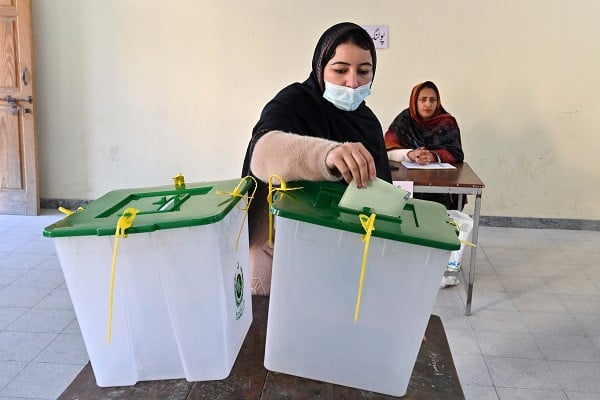ISLAMABAD: After tallying all of the votes cast during Thursday’s polling, the Election Commission of Pakistan (ECP) announced the results on Sunday, capping the massive electoral exercise. The ECP also released the preliminary positions of the political parties in the national and provincial assemblies.

There were 854 national and provincial assembly constituencies up for election. The preliminary results showed that 348 independents had successful returns. With a small exception, the independents are members of the Pakistan Tehreek-e-Insaf (PTI), which lost the right to use the bat as its electoral symbol because of contentious internal elections.
The Pakistan Peoples Party (PPP), with 160 seats, and the Pakistan Muslim League-Nawaz (PML-N), with 227 seats, were the two major political parties. With forty-five seats, the Muttahida Qaumi Movement-Pakistan (MQM-P) is ranked third.
Preliminary results show that independents won 101 seats in the National Assembly. The PPP obtained 54 seats, the MQM-P secured 17, while the PML-N secured 75 seats. The PML-Quaid secured three seats, the Jamiat Ulema-e-Islam (JUI) four, the Istehkam-e-Pakistan Party (IPP) two, and the Balochistan National Party (BNP) one.
In addition, Majlis Wahdat-e-Muslimeen Pakistan (MWM), Balochistan Awami Party (BAP), Pashtoonkhwa National Awami Party (PNAP), Pashtunkhwa Milli Awami Party (PkMAP), National Party (NP), and PML-Zia each share one seat.
With 90 and 138 seats won by the independents in Punjab and Khyber-Pakhtunkhwa, respectively, they are leading the provinces. The PPP secured 84 seats in the Sindh Assembly and shared the top spot in the Balochistan Assembly with the JUI, both with 11 seats.
The election, which was significantly postponed in the first place, occurs at a crucial time.
Pakistan’s economy is in dire straits, with diminishing foreign exchange reserves that will be made worse by an impending $1 billion bond payment and a $3 billion loan agreement with the IMF that ends on April 12.
“In the event that no party secures a simple majority, Pakistan is likely to experience increasingly severe political and economic instability,” stated Sajid Amin, a former advisor to the Ministry of Finance and founder of the Sustainable Development Policy Institute.
“But most important is the credibility of elections and legitimacy of the government – any government which lacks credibility will not be able to deliver on much-needed reforms.”
Given that the nation has not yet paid all of its external finance obligations for 2024 and its almost $100 billion external debt burden, obtaining funds will be of the utmost importance.
The $3 billion IMF Stand-by Arrangement is a bridging loan that helped pull the nation back from the verge of default. The new government is expected to move swiftly to finish the remaining review of this arrangement, among other things by addressing the governance of state-owned firms.
By doing this, it would be able to acquire the last $1.1 billion tranche before the present IMF program expires in mid-April, at which point the government would need to immediately negotiate a replacement program.










































